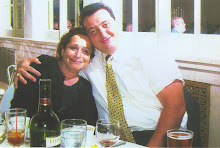AIN DARA, Syria (A.W.)—Both the Syrian government and the British-based Syrian Observatory for Human Rights war monitor confirmed on Sunday that Turkish shelling of Syria’s Afrin region has seriously damaged the Ain Dara Iron Age temple.

Press TV published this photo taken on Jan. 27 from an unidentified social media account showing the ruins of the Ain Dara Temple following Turkish shelling in Afrin (Photo: Press TV)
In a statement published by Syria’s state-run SANA news agency, the Syrian government called for international pressure to be placed on Turkey to “prevent the targeting of archaeological and cultural sites in Afrin area, which is one of the richest areas in antiquities and cultural heritage in Syria.”
The statement goes on to say that the attack “reflects the extent of hatred, malevolence and the barbarism of the Turkish regime against the Syrian identity and against the past of the Syrian people and their present and future.”
Code-named by Turkey as Operation Olive Branch, the Turkish Armed Forces’ large-scale offensive on the Kurdish-majority Afrin Region of Syria was launched on Jan. 20. Officially, the offensive is against the Kurdish-led Democratic Union Party in Syria (PYD), its armed wing People’s Protection Units (YPG), and Syrian Democratic Forces (SDF) positions surrounding the Syrian city of Afrin. Although Turkey also says it is fighting ISIL, it is widely accepted that the terrorist organization does not have a presence in Afrin.
Turkey’s offensive has been widely criticized by many in the international community as an outright attack on the mostly Kurdish civilian population. During the first days of the operation, United States Department of State spokesperson Heather Nauert urged Turkey not to engage in the invasion of Afrin, reiterating a statement made by Secretary of State Rex Tillerson, who also assured that the U.S. had no intention of building a Syria-Turkey border force. The following day, Tillerson said the U.S. was very concerned, adding that the operation’s scope should remain limited and Turkey should “show restraint.”
On Jan. 24, U.S. President Donald Trump reportedly told Turkish President Recep Tayyip Erdogan during a telephone conversation to “de-escalate, limit its military actions, and avoid civilian casualties and increases to displaced persons and refugees.” The Pentagon also asserted Thursday that the “Afrin operations are impeding the task to eliminate ISIS.”
The Syrian Foreign Ministry has strongly condemned the Turkish aggression against Afrin, calling the town “an inseparable part of Syria.” Syrian President Bashar al-Assad called the Turkish invasion “terrorism,” noting that “Turkey’s aggression in the Syrian city of Afrin cannot be separated from the policy pursued by the Turkish regime since the outbreak of the Syrian crisis and built on support for terrorism and various terrorist groups.”
The Dara Iron Age Proto-Hittite Ain Dara temple, is located northwest of Aleppo, near the village of Ain Dara. The temple is noted for its similarities to the biblical Solomon’s Temple, also known as the First Temple. According to the excavator Ali Abu Assaf, the temple was in existence from 1300 BC to 740 BC.
Report: Armenian Killed in Afrin
According to several sources, the home of an Armenian family that had settled in Afrin following the Armenian Genocide was shelled on Jan. 24, killing Armenian Rosher Konis. The reports also indicate that Konis’s mother, Shamsa, and sister, Hanifa Konis, were gravely injured in the bombing.
The Hawar News Agency reported that Hartyon Kivork, a relative of the family, confirmed the killing. “[Our] ancestors fled the oppression of the Turkish authorities nearly 100 years ago in the result of the massacres committed by the Turks against the Armenians so that they headed towards Afrin to live in peace among their Kurdish brothers and all other peoples and sects living in the area.”
Kivork added that Turkish occupation army had “resumed its massacres,” which do not differentiate between people and launched “new massacres against all peoples in Afrin to leave our Armenian family as a victim of the Turkish crimes again.”
Hawar released a series of photographs of the injuries sustained by the Konis family, though most of the photographs were blurred and cannot be confirmed to be authentic.
According to several sources, three Armenian families currently live in Afrin. A sizable Armenian community lived there and in the nearby village of Azaz before the Syrian Civil War. Armenian Foreign Affairs Ministry spokesperson Tigran Balayan told Armenian reporters on Monday that his ministry is trying to confirm Konis’s death.




Edward, “Germany acknowledged, financial compensation paid”
How can the Germans ever compensate us for all of our dead, more than 6 million? Certain moneys were paid but they did not even equal a fraction of the Jewish property stolen or destroyed. Since Germany and Austria enabled the Armenian genocide through their alliance in WW One with Turkey, maybe Armenians should demand reparations from the Germans.
As for trade, I believe that Armenia too has some trade with Turkey.